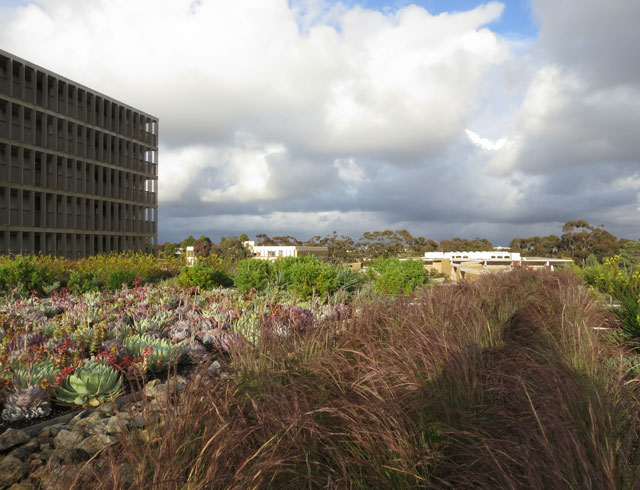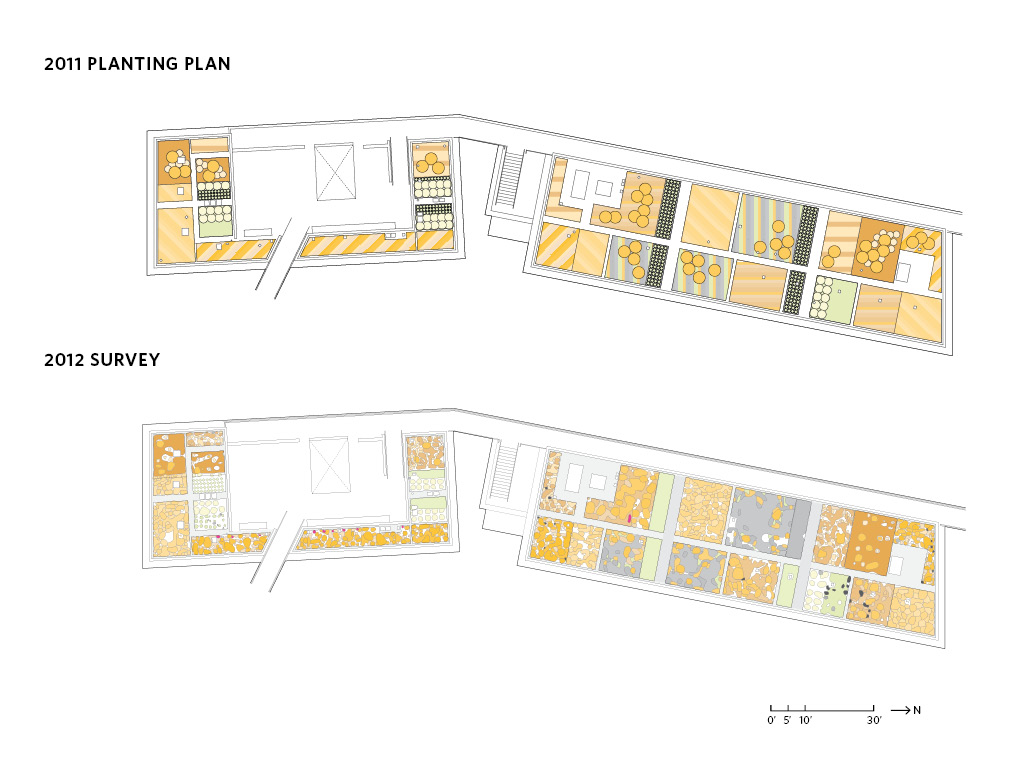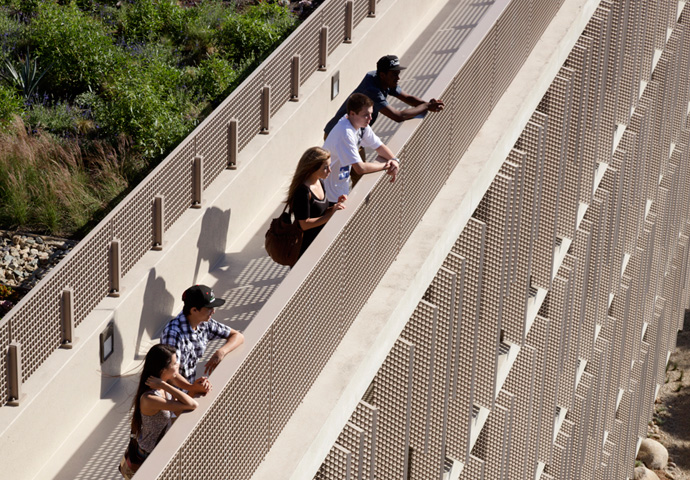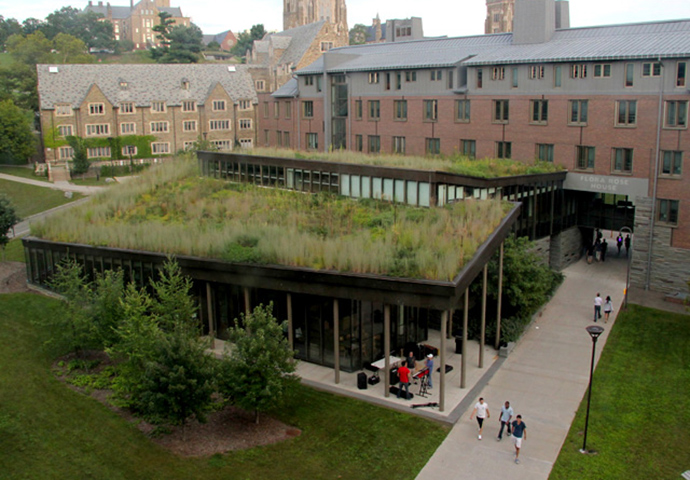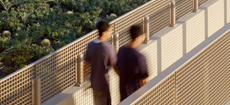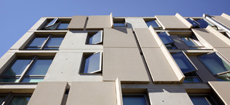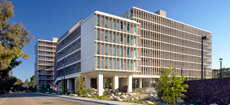Before and After: One Year of Green Roof Growth
The green roof at Charles David Keeling Apartments.
The KieranTimberlake Research Group undertook a survey of the green roof located atop a new residence hall on the western edge of the University of California, San Diego, campus as part of a larger study of green roofs at six of our university buildings.
A comparison of vegetation planted and after one year of growth.
The roof of Keeling Apartments borders the highly landscaped campus, surrounded by eucalyptus trees, and the coastal boulevard that follows the La Jolla cliffs. With the ocean nearby to the west, the roof is highly exposed to wind, salt, and humidity.
The green roof covers roughly 5,000 square feet and is divided into two distinct sections by an exterior stair and patio. It can be characterized as an intensive green roof, planted with temperate succulents and drought-tolerant grasses. This roof is formal in composition and is planted in a series of subdivided beds, separated by a perforated edge retainer that limits root movement between zones. The green roof assembly has an overall depth that fluctuates from 6 to 18 inches. Since the roof insulation slopes, while the finish level of the roof deck is flat, green roof media makes up the difference in grade. It is watered using a drip irrigation system fed by reclaimed and recycled water tied to cisterns located at grade and fed through a pressurized pump.
Species Presence
Species Presence
Percent Coverage
The green roof exhibits moderately high vegetative cover (81%). The southern roof exhibits lower coverage (69%) when compared to the larger northern section (86%). This discrepancy in coverage may be correlated to differences in species distribution between the two roofs and irrigation issues that affected the southern roof.
Percent Coverage
Species Richness
The green roof was initially planted with 23 species and now supports 30 distinct species. The emergence of new species has been moderated by the rigorous maintenance and weeding regime implemented during this first year of plant establishment.
Species Richness
Species Diversity
The green roof was determined to have moderately high biodiversity (Shannon Index=22.30), an increase from the original plant design (SI=16.20). Over the establishment year, there has been a slight increase in number of plant species and improved distribution of existing species.
At the time of the survey, each of the original species was found to be present. Herbaceous forbs have colonized at a greater rate than succulent species, thereby increasing in overall plant type distribution. Overall plant presence has not changed significantly as a result of maintenance regimes followed during the first year of plant establishment. Increases in specific species are related to expected lifecycles and growth rate. At the time of survey, blue gramma grass and deer grass had just been trimmed for the season, leading to a potential underestimation of their success rate and establishment.
The green roof is a succulent-dominated roof system that is in the early establishment phase. To date, the thorough maintenance plan has allowed for successful plant establishment and highly controlled and directed plant development. The green roof exhibits moderately low and even average species cover, as well as moderately high and even relative cover across the entire roof. In other words, there is no single dominant species, but a group of species with relatively even cover and low intermixing or “sociability.” This pattern of plant distribution is a result of roof design, including the steel frame-divided planting beds; the plant selection, which favors rhizomatically spread, or clumping, species; and the maintenance regime, which has emphasized a high level of weeding. Overall it is performing well, supporting the activity of students and wildlife.
Discussion
Compared to the other roofs in our study, which were located in New England, the Keeling Apartments roof is unique in its geography, climate, plant selection, and roof detail. Perhaps most significantly, it is the only roof that was monitored immediately following plant establishment. Accordingly, this survey will serve as an accurate baseline for future study and offers an exciting opportunity to monitor the trajectory and changes in plant dynamics and roof performance over time.
Some questions that arise include: What will happen to plant distributions once the maintenance regime changes? Will certain groupings of species allow for greater co-mingling? Will mixed planter beds transition to single-species dominated systems? Will there be a sudden increase in emergent species?
Though we can say little about the future of the roof after its initial establishment, the present conditions show that it is meeting its short-term goals in terms of health and performance. The vegetation appears well suited to its environment, with significant growth across the roof and only a few areas, such as the vines along the fencing, requiring additional attention. Additionally, the roof is serving as a significant amenity to students and also to surrounding wildlife. Despite its height and exposure, a diverse range of pollinators, including several species of bees and hummingbirds, were present and active.



